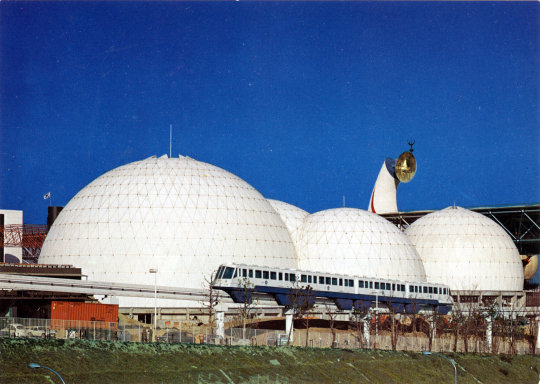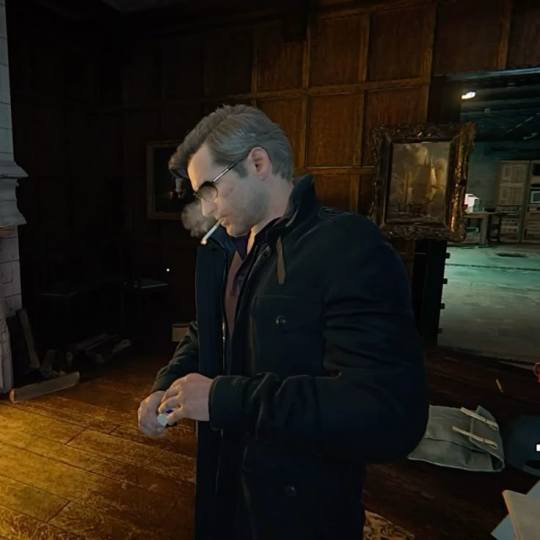#Post Soviet Future
Explore tagged Tumblr posts
Text
Then | Time isn’t linear in tomorrow
Time isn't linear, and neither is culture. Your grandmother's photo album, but it’s phonk 📀
#The Phonk#Temporal Beats#Post Soviet Future#Experimental Cinema#Urban Studies#Architectural Heritage#Culture Tech#Hybrid Phonk#New Dawn Culture#Hybrid Art#Orthodox Phonk#Pagan#Post Soviet#Street Culture#Eastern Europe
2 notes
·
View notes
Text
Soviet!Ice Headcanons
I've decided to do a little follow up, hope you enjoy!
Born as Toma Efimovich Kazansky in Odessa, Ukraine
His favorite food is his babushka's borscht and likes to drink more kvass than he should on a daily basis
He and his family left the Soviet Union in 1973, when he was 14 years old
Settled in New York, since it has a large Jewish population
Because of the Soviet Union's disapproval of religions (especially Judaism) he wasn't able to have a proper Bar Mitzvah, so his family quickly joined a shul so he could have one
Being Jewish in America was a strange experience for him- everyone knew how to read the funny looking words in the siddur but he couldn't, since he never learned Hebrew before coming to America. Even amongst Jews he still felt like he didn't fit in because of his background
And also being a Soviet immigrant made him stick out like a sore thumb among his classmates, who were suspicious of the new kid with the funny accent and last name. Over time, he learned how to speak English without an accent so he wouldn't be bullied
Many people have called him slurs. Over time, he figured it's best not to show any emotion. This is one of the reasons why his callsign became Iceman
The other one being that because he speaks Russian, people assume him to be incredibly stoic and completely void of any emotions
Few people know he speaks Russian. Only Slider does, and later, Maverick. Most people who meet him immediately notice the Jewish last name but don't realize right away that he speaks a different language
Preferred to hide his Jewish practices from pretty much everybody. He still observed, but only in private. The only two people he truly felt comfortable enough to open up about this were Slider and Maverick
(not so much Soviet but more Jewish, he and Mav get married under a chuppah much later in the future)
#jewish tom kazansky#pete maverick mitchell#ron slider kerner#top gun 1986#top gun maverick#might add onto this headcanon in the future#made ice's family come from odessa because that's where my family is from and it's a cool city#it also has a very rich jewish culture#icemav#aaaaaaaaaah can't believe i nearly forgot that tag#also based on this post i think it's safe to say that i did in fact want soviet immigrant tom kazansky
131 notes
·
View notes
Text



🕹️ inspired by A Relic of the Past 🕹️
introduction to USSR "PERI" EAM-83 by MIDPOINT based on Морской бой (Sea Battle) by MIDWAY
For 0.15 SUR the people of 1973 Soviet Russia had the chance to fight off enemy ships through a real periscope viewfinder, equipped with sight windows, a map of military hostilities, a score board, and ship and ammunition names. people everywhere had an entertaining and semi-realistic way to experience the every day perils of the Soviet Navy
Now for 2,700 SUR, ten years into the future you too can experience this with ease, on MIDPOINT'S improved recreation, PERI, equipped with two new ship steering wheels and control panels for multiplayer mode and a novelty periscope, this is the perfect edition to any vintage arcade game lover's collection
A few interesting websites/videos i found during this:
➮The Museum of Soviet Arcade Machines
➮Morskoi Boy
➮Arcade games from the Soviet Union
And a few cool pictures of the arcade machine this is based on:





#80s game#80s games#arcade machine#arcade#retro#retro aesthetic#casette futurism#robot oc#robot art#robophilia#mechanophilia#objectum#ussr mention#ussr history#soviet union#blender 4.1#blender model#3d model#3d modeling#blender 3d#blender art#fake advertising#fake advertisement#donut posting#peri scope#peri scope oc#cici tv#this does have to do with cici#i COULD NOT figure out how to get the rigging to do what i wanted#aoough
9 notes
·
View notes
Text
i feel like DE is a really good example of hauntological aesthetics and ideas making their way into mainstream art. it’s such a nebulous concept that people use to mean anything from “the actual narrow way it was first used by derrida” to “just about any film with ghosts in it” but i’ve never seen something that fits as many of its attributes as this game does. hopes of lost futures fading. a literal fog of depression and forgetting slowly consuming the world. communism that was suppressed, liberalism that doesn’t work, a shabby grimy sad post-soviet french city, anachronistic technology, timelessness, music as a carrier of the past, etc etc etc . Shivers is basically psychogeography
and yes i am aware that this post is extremely 2021core but that’s why i’m making it on the only website where that fact won’t get judged
270 notes
·
View notes
Text
Although i certainly find universal nuclear disarmament to be a morally correct and honourable goal, it's also very clear that a reasonable part of those campaigning for it are very entrenched in anti-communist views - focusing with much strictness on the development of nuclear warheads by the DPRK, China and Russia (which isn't socialist, but nevertheless). At best they criticize the gigantic war industry of the US, but only by liberal metrics of "we should only have the necessary" and stuff like that. However, it is also clear that the development of nuclear armament - although not the main priority - should, very clearly, be something that socialist states now and in the future must consider. Even if not full blown nuclear armament - at least ICBMs and others like it. For it is not a mistake or an insanity that the DPRK, for example, has developed nuclear warheads; it knows that it is the subject of constant international harassment and it is prepared to have what is, for now, the most powerful rhetorical weapon against this. Future socialist countries should, yes, follow this! And, you see, a big number of communists mainly in the West (and to great extents elsewhere) do not see military strategy and development post-revolution as important. And this is stupid! Foolish! Russia was the subject of an inter-imperialist gangbang from all sides, and it only survived to form the Soviet Union with the development of a strong, renewed Red Army, big in bulk and in equipment. And socialist revolutions in the future will also need to have this: they'll need a Red Army, Red Navy and Red Air Force. And communists NOW should think about how this needs to be developed and need to learn strategy and need to be active within military circles (although, of course, in the imperial core the military is a much clearer peon of international capital than in the global south, so things are harder in this stance). Socialism here, now and in the future will certainly be striked with the combined forces of capital tumbling down on any form of organized proletariat. This happens to countries contrary to the imperialist USAmerican order, socialist or not: it imposed a military dictatorship in Cambodia in 1970, it couped Chile in 1973, it annihilated Grenada in 1983, it helped oust Aristide in Haiti in 2004, it destroyed Libya in 2011 - not counting many others. This means that developing a strong, truly proletarian armed force and developing means to defend it long term beyond that - ICBMs, and, of course, following the correct Korean path, even nuclear missiles - are crucial for the establishment of socialist states. And only when socialism is triumphant or on its way to triumph may these rhetorical and physical defenses of socialism be dismantled. Or only if the capitalist world surrenders all of it at the same time. However, believe me: they won't. As such, i'd say that in the 21st century, Lenin's little formula can be adapted to: Communism is Soviet power + electrification + ballistic missiles, in a gross simplification. The basis, the development and the defense.
231 notes
·
View notes
Text

Osaka Expo ‘70 and Metabolism
Expo 70 was a world fair placed in Osaka prefecture in 1970, the first one ever held in Japan (and even Asia). It consisted of an outsized international exhibition about countries' accomplishments in terms of architecture, technologies, and economic development. Themed after the slogan Progress and Harmony for Mankind, the event aimed to display new promises of technology to achieve peace and stability to the world. This post is a replica of the linked article.

The master plan of the expo was commissioned to Kenzo Tange, a prominent figure in contemporary Japanese architecture. With the help of another 12 architects - Metabolist group included - they designed and organized several elements for the fair.
Osaka became a playground for Metabolism, an empty field to test their ideas about future, equipment, and organic development. The results astonished, streets became full of life with space-age installations, colors flooded all 330 hectares of responsible terrain. Wonders built as a forecast of the future about to come.






As a central piece of the fair, the designers conceptualized a place where people from around the globe could interact and socialize. The thoughts of a cover unified space where attendants could meet each other, they named it the Symbol Zone, a large plaza covered by a gigantic metal-framed roof:

In the middle of the plaza, you could find the Tower of Sun, a monumental sculpture made by Taro Okamoto. The 70-meter-high tower was a representation of the different faces of the sun during seasons.

With more than 64 million attendees, and 77 countries invited to participate, the event was a complete success. Besides Japanese-designed installations, other nations had the opportunity to showcase their pavilions, and they did not disappoint at all.


Swiss pavilion & Australian pavilion ^


Soviet pavilion & British pavilion (orly?) ^


French & Italian pavilions ^


The Dutch pavilion ^^
161 notes
·
View notes
Text


My old edits of Ukraine wearing a more accurate (simplified) traditional costume in comparison to the Sharovarshchyna-like clothes she has on in the original

Sharovarshchyna is basically pseudo-ethnic clothing that has nothing to do with Ukrainian national wear, and only pretends to be ethnic through kitsch elements. Sooo... something like this:

Sharovarshchyna:
Cheap, thin fabric, often glossy. Eye-straining red + white colour combination. Large and very vibrant flowers on the clothes, sometimes glued on. Generally very saturated colours, plastic-looking flower crowns that have no usage in traditional rituals or holidays. Often very low in details, minor accessories like a single necklace. Men often depicted wearing vibrant red boots (symbol of femininity? most of the time brides would wear those). Has nothing to do with Ukrainian heritage. A caricature, theatrical costume popularized in the late 19th century, later endorsed during the soviet era, when russification was especially violent, and only the "correct" showcasing of Ukrainian things wasn't persecuted. Still used by Ukrainians as a scenical costume for the very purpose it was created - because it's cheap, and easier to dance in.
"Sharovarshchyna" comes from the word "sharovary" which is the name of the stereotypical loose Cossack pants
Traditional Ukrainian costume:
Mostly muted colour scheme. Dark red, black and white often used as dominant colours, with details of other tones with higher saturation. Many elements vary depending on the region and occasion. Typically linen or thick cotton fabric. Detailed decorative embroidered elements have spiritual and symbolic meanings. Flower crown-like headwear worn by women during holidays and ceremonies (like weddings). Decorative tassels and fringe are often used on sleeves, hems, and headpieces to add texture and flair.
Also! Aprons, scarves, sashes, belts, and a lot of different headwear! (っ.❛ ᴗ ❛.)っ


edit: for additional context, the second picture showcases wedding crowns and hats
Also some bonus examples of modern Ukrainian ethno-fashion ↓



Thanks for reading. I plan to do a more elaborate post with illustrations about Ukrainian traditional wear sometime in the future 🙏
#hetalia#screenshot edit#hws ukraine#aph ukraine#ukraine#aph#hws#ukrainian culture#ukrainian clothes#traditional clothing#artists on tumblr#украрт#арткозацтво#укртумбочка#укр тумбочка#український тамблер#український tumblr#hetalia ukraine
592 notes
·
View notes
Text
Many people have been asking me "what's hdg" because I've reblogged memes about it a lot as of late, so I've been meaning to write a Big Post about the question of "What is Human Domestication Guide?"
Well, it's simple. I can explain it in one sentence:
In Soviet Future, House Plant Owns You!
(I'll write a real post later. This is another hdg shitpost. I'm sorry)
269 notes
·
View notes
Note
Haven’t read many comics, but I’ve started reading stuff you post about, so I’ve read immortal hulk and 20th century men, and am going to start ultimate spiderman. Do you have any recommendations?
Here's a few that run the gamut from "quasi-foundational" to "I personally thought it was neat:"
Superhero:
Watchmen by Alan Moore and Dave Gibbons- the comic every superhero comic published since the 1980s has had to reckon with in some way, and which half the genre spent the 90s trying to emulate.
Superman: Birthright by Mark Waid and Lenil Yu- the bespoke canon origin story for Superman that was canon in the early 2000s through the twenty-tens. Remains one of the stronger attempts to do a retelling of his origin.
Batman: Year One by Frank Miller and David Mazzuchelli- a four-issue storyline covering Batman's extremely early career in Gotham.
Batman: The Dark Knight Returns by Frank Miller. Conceived as "The last Batman Story," features a fifty-something Bruce Wayne after he comes out of retirement to fight against an enormous crime wave against the backdrop of incipient nuclear war with the Soviet Union. This is the other grim and gritty superhero deconstruction that half the genre spent the 90s trying to emulate, and although it hasn't aged as well it's a useful read for context.
Runaways by Brian K Vaughn and Adrian Alphona. A marvel-universe excursion about a group of six teens and tweens who learn that their parents are actually a coven of incredibly powerful supervillains functionally running the entire west coast. They proceed to, well. This was one of those franchises that got zombified and pingponged between different creative teams, but the Vaughn parts are pretty strong.
Ex Machina By Brian K Vaughn and Tony Harris: The world's first and only superhero stops one of the twin towers from being destroyed and parlays this into a successful bid for mayor of New York.
Invincible by Robert Kirkman, Corey Walker and Ryan Ottley. Son of the most powerful superhero, yadda yadda, if you'd dodged awareness of the amazon adaptation I'm not sure how
Astro City by Kurt Busiek, Brent Anderson and Alex Ross- an anthology set in a constructed superhero universe, alternating between one-shots and longer arcs covering an enormous cast of characters over the settings 80-year internal chronology.
Rising Stars by J. Michael Strazynski- follows the rise and fall of the Pederson Specials, 113 children who were granted superpowers in utero when a meteor exploded over their home town-narrated decades later by the last of their number standing.
Marvels by Kurt Busiek and Alex Ross. A retelling of the first 30 years of the Marvel Universe from the perspective of photojournalist Phil Sheldon. On top of being an excellent story it's useful as a recap/primer for much of golden and silver age marvel.
Kingdom Come by Mark Waid and Alex Ross. In the future of the DC universe, A jaded Superman comes out of retirement after the superhuman population balloons out of control and causes a nuclear detonation as a consequence of their cavalier approach to heroics. Unfortunately, his old-school approach isn't much better...
DC: The New Frontier by Darwyn Cooke. Retells the founding of the silver-age justice league against the backdrop of the red scare and following the collapse of the golden-age superheroic community after world war two.
Non-Superhero
Bone By Jeff Smith- Lord of the Rings by way of Mickey, Donald and Goofy. Three cartoon-creature cousins are run out of town and into a remote valley that's the site of a sprawling fantasy epic.
The Walking Dead by Robert Kirkman and Charlie Adlard- The zombie comic. There really hasn't ever been a runner-up
Monstress by Marjorie Liu and Sana Takeda. Steampunk Dark Fantasy thing about a woman forced to share a body with a horrifying elder-parasite thing. Hard to summarize. If you thought RWBY handled the Faunus with insufficient gravity and thoughtfulness this is a good comic for you
East of West by Jonathan Hickman and Nick Dragotta. Weird-west alternate history where the U.S. balkanized after the Civil War. In the resultant cyberpunk urban-fantasy dystopia, three of the four horsemen are attempting to end the world; Death has defected and is attempting to stop them, in the hopes of reuniting with his missing wife and child.
Once and Future by Keiron Gillen and Dan Mora. A seventy-something retired monster hunter breaks out of her nursing home and press-gangs her hapless academic grandson into helping her prevent the return of King Arthur.
The Department of Truth By James Tynion and Martin Simmonds: In a world where reality is affected by consensus by collective belief, a deep state organization works to prevent conspiracy theories from being willed into existence by weirdos on the internet. Notable in that it's very visibly an exercise in trying to grapple with the uglier implications of the postmodern "reality-shaped-by-belief" tropes present in works like American Gods.
Saga by Brian K. Vaughn and Fiona Staples. The indie comic everyone wouldn't shut the fuck up about. Star crossed lovers attempting to navigate their mutual defection from two star-spanning empires locked in an eternal galactic turbowar.
Chew By John Layman and Rob Guillory. Tony Chu is a police detective with the power of Chibopathy- the ability to gain psychometric impressions from whatever he eats. Kept on retainer to partially cannibalize the corpses of murder victims to find out who killed them, his abilities ultimately see him drawn into a bizarre conspiracy surrounding an outbreak of bird flu that killed millions and resulted in the criminalization of poultry products.
Atomic Robo by Brian Clevenger and Scott Wegener The high-octane adventures of action-scientist Atomic Robo, an android constructed by Nikola Tesla in the 1920s who runs a think-tank of science-heroes. Described as "applying the Indiana Jones model to every other field of study." Very fun comic.
We Only Find Them When They're Dead By Al Ewing and Simone Di Meo: follows the exploits of a freelance crew of miners who work to extract tissues from the corpses of gigantic humanoid entities found floating in space, and their captain's heretical goal of being the first to find a living specimen.
Literally Any Comic Written By Kyle Starks, including (lightning round time) Rock Candy Mountain, Old Head, Sexcastle, Kill Them All, Assassin Nation, and Fuck this Place/I Hate This Place (title dependent on retailer squeamishness)
This list isn't exhaustive but I've been typing for a really really long time here
146 notes
·
View notes
Text
If psuedo-progressives with incoherent politics weren't so consistently anti-communist, I could easily imagine a movement of people latching onto Soviet-styled retrofuturism as the aesthetic they base their politics around. Not even actual Soviet art mind you, but taking up various Western caricatures and going "yeah this rules". It's almost sad they we'll never see posts about "building a tankiepunk future" or have people making tweets like

303 notes
·
View notes
Note
Hi 🥺 I am in love with your url and can’t wait to find some way of finding the Tolkienistic implications within. Can I commission a marshmallow sculpture of your fave sometime?
Awww, thank you! My url is actually my nickname from high school … sort of. I was a friendly kid, bubbly, a bit chubby (still am) and wore a light pink sweater. So my friend called me “big zefir”. It’s a type of sweet made of whipped fruit purée, eggs and sugar. Zefirs often come in white and pink. Marshmallows are not that common here, but they’re known around the world (unlike post-soviet treats) so I settled on this imperfect translation. It is tolkienistic in a way, because I often call my favs “my buns” or even “zefirs”. Mae is definitely a huge zefir inside a very hard chocolate shell.
I can’t do commissions - and probably won’t be able in the near future. However I am open to interesting ideas as inspirations :) For now I decided to quickly sketch you something else: Nerdanel making a painted candy figurine of Maitimo - a centerpiece for his coming-of-age cake!

100 notes
·
View notes
Text
Lore details I've noticed: Farewell Rayashki event
As always that's mostly Russian/USSR/Slavic stuff and some translations, feel free to add anything. I've also made a post about Silver Knot lore details
Obviosly, spoiler warning
Alenka - a USSR chocolate type produced since 1965, they are quite soft and sweet and still popular among kids and adults

The playground is quite typical for the time period. The drawings and sunflowers might be Vila’s and kids’ work. It’s not very clear if the graffiti is made by someone inspired by hip-hop culture or is August’s failed attempt at scribbling out his name, judging by “А” and “Г” as 1st and 3rd letters. The only thing I’d add here is more scraped parts recycled into playground constructions

Ijirak, Kikituk, Qiqirn - creatures from Inuit folklore (as far as I know they are not known in native Siberian folklore). I haven’t found information about Hoituk
The Russian word for “most” means “best” in the phrase “the most “most”” (“самый-самый”)
“It was only by luck that we found the runium. For over 60 years, people here have worked together to make it what it is now” - Vila. If the events happen in 60s-80s (judging by the overall vibe), than the last time reverse was at 1977 and Rayashki started to grow from a village to a town at 1917 or later. It means the town exported runium for all the Soviet years.
⬆️ EDIT: Silver Knot (Windsong's story) confirms it actually happens in 80s-90s
Most of the sighs say “For Better Future”, “Welcome to Rayashki” and “Welcome Zeno’s Military Institute”

The room in which Windsong stays is Soviet af. There are an old TV with a lens, cool bookshelf and tiles that surprised me. They’re common for public and liminal spaces but not so much for the living ones. Maybe they’re chosen because they endure harsh Artic climate better that wood or linoleum
EDIT: the TV looks like KVN-49 model, produced in 1949—1962

“It must be Kikituk! But their closest habitat should be Kong Kalrs Land, hundreds of kilometres away”. Kong Karls Land - a group of island of Svalbard archipelago, Norway. As @vingler-mirror point out in their post, Rayashki is likely based on Pyramiden town owned by USSR on the same archipelago


Природа это числа и черты - “Nature is numbers and lines” Природа это мозаика цветов - “Nature is a mosaic of colours”
“Mutant Kikituk from Olga area! You should be at the Olga Strait, hunting for migrating salmon and whales, not here!” - excuse me OLGA STRAIT!? THE ONE NEAR JAPAN!?

Poneva/ponyova - an element of Russian (Eastern Slavic?) female clothing worn on top of the main skirt of the dress. I believe there was either a mistranslation in Needles and Loaves message where Raisa said “poneva dress”, either she meant the whole outfit

Samodiva - Their name is feminine and can be roughly translated as “self-wonder”, but that’s another word for vila the creature from Western and Southern Slavic mythology similar to Eastern Slavic rusalka/mavka

Other stuff I’ve noticed:
The town seems to have a big arcanist population, if not most of them are arcanists. An arcanist right is applicable to them and all Vila’s known students are arcanists (if the kids are arcanists, their parents and grandparents are arcanists too)
The people of Rayashki seem to come from different places, and it makes sense with Pyramiden's history (EDIT: the workers were mostly from a western region of Ukraine). Pasono’s first name seems to be obscure and I’ve found only a surname mostly known in America. Patrik’s name is more popular name in other countries, and it make me to believe his ancestors might be foreigners. Bogina’s name comes from Southern Slavic languages
Rayashki is very communistic compared to the rest of USSR. Maybe it’s the town’s history, citizens’ temperament, small town’s size, seclusion and big self sufficiency combined. EDIT: the town's athmosphere conctasts with the period of USSR where people start feel more positive about the world around and capitalism with it
150 notes
·
View notes
Text
Heather Cox Richardson 11.15.24
One of President-elect Trump’s campaign pledges was to eliminate the Department of Education. He claimed that the department pushes “woke” ideology on America’s schoolchildren and that its employees “hate our children.” He promised to “return” education to the states.
In fact, the Department of Education does not set curriculum; states and local governments do. The Department of Education collects statistics about schools to monitor student performance and promote practices based in evidence. It provides about 10% of funding for K–12 schools through federal grants of about $19.1 billion to high-poverty schools and of $15.5 billion to help cover the cost of educating students with disabilities.
It also oversees the $1.6 trillion federal student loan program, including setting the rules under which colleges and universities can participate. But what really upsets the radical right is that the Department of Education is in charge of prohibiting discrimination on the basis of race and sex in schools that get federal funding, a policy Congress set in 1975 with an act now known as the Individuals with Disabilities Education Act (IDEA). This was before Congress created the department.
The Department of Education became a stand-alone department in May 1980 under Democratic president Jimmy Carter, when Congress split the Department of Health, Education, and Welfare into two departments: the Department of Health and Human Services and the Department of Education.
A Republican-dominated Congress established the Department of Health, Education, and Welfare in 1953 under Republican president Dwight D. Eisenhower as part of a broad attempt to improve the nation’s schools and Americans’ well-being in the flourishing post–World War II economy. When the Soviet Union beat the United States into space by sending up the first Sputnik satellite in 1957, lawmakers concerned that American children were falling behind put more money and effort into educating the country’s youth, especially in math and science.
But support for federal oversight of education took a devastating hit after the Supreme Court, headed by Eisenhower appointee Chief Justice Earl Warren, declared racially segregated schools unconstitutional in the May 1954 Brown v. Board of Education decision.
Immediately, white southern lawmakers launched a campaign of what they called “massive resistance” to integration. Some Virginia counties closed their public schools. Other school districts took funds from integrated public schools and used a grant system to redistribute those funds to segregated private schools. Then, Supreme Court decisions in 1962 and 1963 that declared prayer in schools unconstitutional cemented the decision of white evangelicals to leave the public schools, convinced that public schools were leading their children to perdition.
In 1980, Republican Ronald Reagan ran on a promise to eliminate the new Department of Education.
After Reagan’s election, his secretary of education commissioned a study of the nation’s public schools, starting with the conviction that there was a “widespread public perception that something is seriously remiss in our educational system.” The resulting report, titled “A Nation at Risk,” announced that “the educational foundations of our society are presently being eroded by a rising tide of mediocrity that threatens our very future as a Nation and a people.”
Although a later study commissioned in 1990 by the Secretary of Energy found the data in the original report did not support the report’s conclusions, Reagan nonetheless used the report in his day to justify school privatization. He vowed after the report’s release that he would “continue to work in the months ahead for passage of tuition tax credits, vouchers, educational savings accounts, voluntary school prayer, and abolishing the Department of Education. Our agenda is to restore quality to education by increasing competition and by strengthening parental choice and local control.”
The rise of white evangelism and its marriage to Republican politics fed the right-wing conviction that public education no longer served “family values” and that parents had been cut out of their children’s education. Christians began to educate their children at home, believing that public schools were indoctrinating their children with secular values.
When he took office in 2017, Trump rewarded those evangelicals who had supported his candidacy by putting right-wing evangelical activist Betsy DeVos in charge of the Education Department. She called for eliminating the department—until she used its funding power to try to keep schools open during the covid pandemic—and asked for massive cuts in education spending.
Rather than funding public schools, DeVos called instead for tax money to be spent on education vouchers, which distribute tax money to parents to spend for education as they see fit. This system starves the public schools and subsidizes wealthy families whose children are already in private schools. DeVos also rolled back civil rights protections for students of color and LGBTQ+ students but increased protections for students accused of sexual assault.
In 2019, the 1619 Project, published by the New York Times Magazine on the 400th anniversary of the arrival of enslaved Africans at Jamestown in Virginia Colony, argued that the true history of the United States began in 1619, establishing the roots of the country in the enslavement of Black Americans. That, combined with the Black Lives Matter protests in 2020, prompted Trump to commission the 1776 Project, which rooted the country in its original patriotic ideals and insisted that any moments in which it had fallen away from those ideals were quickly corrected. He also moved to ban diversity training in federal agencies.
When Trump lost the 2020 election, his loyalists turned to undermining the public schools to destroy what they considered an illegitimate focus on race and gender that was corrupting children. In January 2021, Republican activists formed Moms for Liberty, which called itself a parental rights organization and began to demand the banning of LGBTQ+ books from school libraries. Right-wing activist Christopher Rufo engineered a national panic over the false idea that public school educators were teaching their students critical race theory, a theory taught as an elective in law school to explain why desegregation laws had not ended racial discrimination.
After January 2021, 44 legislatures began to consider laws to ban the teaching of critical race theory or to limit how teachers could talk about racism and sexism, saying that existing curricula caused white children to feel guilty.
When the Biden administration expanded the protections enforced by the Department of Education to include LGBTQ+ students, Trump turned to focusing on the idea that transgender students were playing high-school sports despite the restrictions on that practice in the interest of “ensuring fairness in competition or preventing sports-related injury.”
During the 2024 political campaign, Trump brought the longstanding theme of public schools as dangerous sites of indoctrination to a ridiculous conclusion, repeatedly insisting that public schools were performing gender-transition surgery on students. But that cartoonish exaggeration spoke to voters who had come to see the equal rights protected by the Department of Education as an assault on their own identity. That position leads directly to the idea of eliminating the Department of Education.
But that might not work out as right-wing Americans imagine. As Morning Joe economic analyst Steven Rattner notes, for all that Republicans embrace the attacks on public education, Republican-dominated states receive significantly more federal money for education than Democratic-dominated states do, although the Democratic states contribute significantly more tax dollars.
There is a bigger game afoot, though, than the current attack on the Department of Education. As Thomas Jefferson recognized, education is fundamental to democracy, because only educated people can accurately evaluate the governmental policies that will truly benefit them.
In 1786, Jefferson wrote to a colleague about public education: “No other sure foundation can be devised for the preservation of freedom, and happiness…. Preach, my dear Sir, a crusade against ignorance; establish and improve the law for educating the common people. Let our countrymen know that the people alone can protect us against [the evils of “kings, nobles and priests”], and that the tax which will be paid for this purpose is not more than the thousandth part of what will be paid to kings, priests and nobles who will rise up among us if we leave the people in ignorance.”
100 notes
·
View notes
Text
Google Drive full of book PDFs about Chernobyl
Link to the Google Drive if you don't want to click the title: https://drive.google.com/drive/folders/1kscKFciW6almJA8p-0sUQPO3c0A4AQYe
Note: It will be updated regularly - for as long as I'll be able to find/get new things =) So far I've compiled 41 books in three languages.
Just to repeat what I said in the first post: I'm open to any requests or suggestions or even PDFs themselves, if someone wants to share theirs from their collection. Message me, send me an ask, throw a rock through my window - whatever you prefer, just please, do it yourself because I'm too scared to message anyone, thanks. No fiction - that's the only rule. Any language is welcome - if you want me to look for a certain book in the language of your choice, I'll do that. If you have a book in language other than English, I'd love to add it to the Drive! If you have a better version of whatever PDF I've already got, then I'd be more than happy to do a swap.
Now, some of my reasoning, if anyone's interested: first of all, I think it's important for everyone to be able to access stuff like this. Think of it as a library, minus the "give these back" part. Secondly, I get soooo mad when people are like haha, found this super rare, basically impossible to find, very expensive book! ...I shall now keep it exclusively to myself. Ma'am, you're ruining the vibe and stalling everyone's hobby research but I guess you do you...
List of all the books (under the cut):
In English:
Voices from Chernobyl - Alexievich S.
Chernobyl Reactor Accident - Source Term
Chernobyl - Insight from the Inside - Dr. Chernousenko V.M.
How It Was - Dyatlov A.S.
(ENG+RUS) Chernobyl Booklet
Chernobyl: The Devastation, Destruction and Consequences of the World’s Worst Radiation Accident - Fitzgerald I.
Final Warning. The Legacy of Chernobyl - Gale R.P.
Midnight in Chernobyl: The Untold Story of the World’s Greatest Nuclear Disaster - Higginbotham A.
INSAG-1
INSAG-7
Interesting Chernobyl - 100 Symbols
From Chernobyl To Fukushima - Karpan N.
Manual for Survival. A Chernobyl Guide to the Future - Kate Brown
Chernobyl. Confessions of a Reporter - Kostin I.
The Politics of Invisibility. Public Knowledge about Radiation Health Effects after Chernobyl - Kuchinskaya O.
Memories - Kupnyi A.
Chernobyl 01:23:40 - The Incredible True Story of the World’s Worst Nuclear Disaster - Leatherbarrow A.
Chernobyl Notebook - Medvedev G.
No Breathing Room - Medvedev G.
Chernobyl Record - The Definitive History of the Chernobyl Catastrophe - Mould R. F.
Wormwood Forest - A Natural History of Chernobyl - Mycio M.
Life Exposed: Biological Citizens After Chernobyl - Petryna A.
Chernobyl: History of a Tragedy - Plokhy S.
Ablaze - Story of Chernobyl - Read P.P.
Producing Power: The Pre-Chernobyl History of the Soviet Nuclear Industry - Schmid S. D.
Chernobyl: A Documentary Story - Shcherbak I.
The Vienna Report
Chernobyl - Crime Without Punishment - Yaroshinskaya A.A.
In Russian:
Chernobyl: Kak eto bylo. Preduprezhdeni - Kopchinsky, Steinberg
Chernobyl. Tak eto bylo. Vzglyad Iznutri - Voznyak Ya. Troitskiy N.
Лучевая болезнь человека (очерки) - Гуськова А.К., Байсоголов Г.Д.
Чернобыль. Как это было - Дятлов А.С.
Чернобыль: 30 лет спустя - Кравчук Н.В.
Живы - Купный А.
Чернобыль - Щербак Ю.
(ONLY Pages 367-383) Чернобыль, 10 лет спустя. Неизбежность или случайность?
KGB files - pre and post accident (includes additional information in Ukrainian)
In Polish:
Jak to było - Diatłov A.S.
Czarnobyl - Plokhy S.
Czarnobyl - Sekuła P.
Katastrofa w Czarnobylu - Sekuła P.
Czarnobyl. Od katastrofy do procesu - Siwiński W.
#chernobyl#26th april 1986#nuclear power plant#chornobyl#nuclear disaster#chernobyl hbo#you wouldn't download a car#file: special interest: chernobyl#Чернобыль#pripyat#rbmk 1000#radiation#free resources#free books
658 notes
·
View notes
Text
1930, crisis & Woods…
A History Lesson.
Disclaimer: Sorry if the tone of this post is too blunt, raw, etc. I cried while writing this, but I couldn’t help it. I really wanted to write this because my curiosity and love for history mixed with one of the characters I care about most and his context. And yes, it brought out a lot of things from within me that I didn’t even know I had.
Although I had learned and read about this event since I was a child—something often mentioned in my country as a constant reminder of what to avoid—studying it as a child, as a teenager, and now revisiting it through a particular character (or several) is completely different...
Please don’t take this personally, beautiful person <3. Here, we’re only seeking informative purposes in this post.
So, read it at your own discretion because this is going to start off strong.

I feel like NO ONE is taking into account the HISTORICAL CONTEXT of ALL the Black Ops characters (Not necessarily here, but in different media).... Adler was born in 1937... Weaver in 1936... Woods in 1930...
Damn, even the official wiki states that Woods was born in 1937 in Pennsylvania and that as a child, he ran away from home and wandered the streets until he joined the military at 18, or maybe even earlier. It wouldn’t surprise me if he lied about his age to enlist sooner because WE’RE TALKING ABOUT FRANK WOODS BEING BORN DURING THE GREAT DEPRESSION OF 1930!!!!
“Frank Woods was born on March 20, 1930, and grew up in Philadelphia, Pennsylvania. He ran away from home as a young child, forced to rely on street smarts and his instincts. Woods quickly learned to be completely independent.” Text quoted from the wiki.
Did no one read about how families literally had NO FOOD to feed their children???? Did no one read about how families SOLD their children to avoid having so many mouths to feed? Was I the only one who saw those photos??? Where mothers cried and covered their faces IN SHAME for having to SELL their CHILDREN who weren’t even 5 years old. Well, in EXACTLY THAT CONTEXT, Frank Woods was born and raised…

I think many people aren’t considering, or aren’t taking into account, the historical and social context in which these characters grew up. They’re judging them with a 2025 mindset, without stopping to think about what it meant to live in the 30s, 40s, and 50s.

“In the coal fields of Pennsylvania, three or four families crowded into single-room shacks and survived on wild herbs. In Arkansas, families were found living in caves. In Oakland, California, entire families lived in sewer pipes.” Woods was born in the midst of the Great Depression (1930), a period of brutal extreme poverty. Families literally starved to death, and many sold or abandoned their children because they couldn’t support them. The fact that Woods lived on the streets from a young age makes sense in this context. He likely never had a real family, and that explains his personality: aggressive, independent, with a survivor’s mentality. Enlisting in the military at 18 (or earlier, lying about his age) is completely logical for someone with his background.
“More than 200,000 vagrant children roamed the country as a result of the disintegration of their families.” And Woods was one of them.

Adler and Weaver, on the other hand, were born in the midst of World War II (1936 and 1937). This means their early years were marked by a world entirely at war, with resource shortages, constant fear, and an uncertain future. Weaver wasn’t even born in the U.S., but in the Soviet Union, which endured HORRORS during the war. And let’s not forget that his childhood wasn’t just shaped by the war, but also by Stalin’s dictatorship, which brought repression, purges, and fear even within families themselves. Most players have no idea about the real historical context, and I DON’T blame anyone for not knowing, because these are character details that don’t affect or influence the plot. But for me, at least, I don’t like to overlook them. Some see the characters as "action heroes" and not as men who grew up in brutal contexts that shaped their worldview. They don’t ask what it means to have been born in 1930, 1936, or 1937. They don’t think about how war, poverty, dictatorship, and the Cold War affected their mentalities. And the worst part is that they judge them with today’s mindset. Of course, in 2025, we think differently about relationships, trauma, and life. But in the 50s, 60s, 70s, and 80s, when these characters grew up and lived their youth, the mentality was completely different. You can’t expect them to think or act like someone born in 2000 or 2010 would.




Adler and Weaver, on the other hand, were born in the midst of World War II (1936 and 1937). This means their early years were marked by a world entirely at war, with resource shortages, constant fear, and an uncertain future. Weaver wasn’t even born in the U.S., but in the Soviet Union, which endured HORRORS during the war. And let’s not forget that his childhood wasn’t just shaped by the war, but also by Stalin’s dictatorship, which brought repression, purges, and fear even within families themselves. Most players have no idea about the real historical context, and I DON’T blame anyone for not knowing, because these are character details that don’t affect or influence the plot. But for me, at least, I don’t like to overlook them. Some see the characters as "action heroes" and not as men who grew up in brutal contexts that shaped their worldview. They don’t ask what it means to have been born in 1930, 1936, or 1937. They don’t think about how war, poverty, dictatorship, and the Cold War affected their mentalities. And the worst part is that they judge them with today’s mindset. Of course, in 2025, we think differently about relationships, trauma, and life. But in the 50s, 60s, 70s, and 80s, when these characters grew up and lived their youth, the mentality was completely different. You can’t expect them to think or act like someone born in 2000 or 2010 would.
So, getting back to the topic…

✨Express history lesson with the Black Ops crew✨
1930s: THE GREAT DEPRESSION AND SURVIVAL (1929-1939) When Woods was born in 1930, the U.S. was in its worst economic crisis in history: the Great Depression. The Wall Street stock market had collapsed in 1929, and millions of people were left without jobs or homes. Values and mindset of the 1930s in the U.S.:
Survival at all costs: There was no time to think about emotions or trauma; the priority was getting food. People hardened because they couldn’t afford to be vulnerable.
Extreme self-reliance: The government didn’t help much, so everyone had to find a way to survive on their own. If you starved, it was your problem.
Strong machismo: Women didn’t have real labor rights, and their role was to "take care of the home." If a man couldn’t provide for his family, he was seen as a failure.
Extreme racism: Racial segregation was the norm. Black and white people couldn’t share bathrooms, restaurants, or public transportation.

Impact on Woods:
He grew up on the streets, without a stable family or protection. He learned from a young age that no one was going to help him and that he had to be strong on his own.
He most likely experienced extreme hunger and violence. He became a natural fighter out of necessity.
"Tough guy" mentality: Back then, expressing emotions was seen as weakness. Woods learned that to survive, he had to be aggressive and self-reliant.
1940s: WORLD WAR II AND PATRIOTISM (1939-1945) When Adler and Weaver were born (1936 and 1937), the world was at war. The U.S. entered World War II in 1941, and society changed dramatically. Values and mindset of the 1940s:
Hyper-patriotism: The war made sacrifice for the country the most important thing. Men were pressured to enlist.
Strict gender roles: Men went to war; women stayed home or worked in factories to support the war effort.
Paranoia and espionage: The war created constant fear of the "enemy," especially after the U.S. discovered concentration camps in Germany and later dropped atomic bombs.
Children grew up fast: There was no normal childhood. Kids saw their parents go to war, heard news of bombings, and learned that the world was a cruel place.
Impact on Adler and Weaver:
They learned that violence was normal. From a young age, they grew up seeing soldiers and weapons everywhere.
The enemy was real. Adler, growing up in the U.S., absorbed from childhood that Nazis, Soviets, and Japanese were "the enemy."
Weaver, on the other hand, was born in the USSR and lived under a dictatorship. As a Soviet, he grew up in a world where anyone could betray you, where the KGB spied on its own people, and where a simple rumor could send you to a labor camp in Siberia.
1950s: COLD WAR (1945-1959) After World War II, the USSR and the U.S. entered the Cold War, a power struggle between communism and capitalism. People lived with constant paranoia, fear of nuclear war, and hatred between the U.S. and the USSR. Values and mindset of the 1950s:
Structural racism: Racial segregation still existed in the U.S. (separate bathrooms and restaurants for Black and white people).
Political paranoia: People were afraid of being accused of being communists. Being a communist could ruin your life.
Fixation on the "perfect family": Television and advertising portrayed the American dream as getting married, having kids, and living in a house with a yard.
Impact on Adler and Weaver:
Weaver, who emigrated to the U.S. during this time, likely faced a lot of racism and discrimination. He was seen as a "Russian communist," even if he wasn’t.
Adler, raised in the U.S., grew up with the mindset that communism was "the great enemy."
Work was everything. The CIA, the military, or the war were more important than any personal relationships.
As a small personal note, I’d say this is where we can clearly see the power of propaganda over the general population in a society and how fear intensifies everything.

1960s: VIETNAM WAR AND POLITICAL VIOLENCE By this time, our characters were adults and starting to work as soldiers or agents. Values and mindset of the 1960s:
Vietnam War: The U.S. sent thousands of young men to fight in Vietnam. This traumatized an entire generation.
Distrust in the government: Corruption scandals and the assassination of JFK made many stop believing in institutions.
Impact on Woods, Adler, and Weaver:
They were sent to war. They experienced brutal things and had to kill without question.
Adler and Woods saw the brutality of war and understood that the government lies.

1970s and 1980s: EXTREME COLD WAR AND TOTAL CYNICISM By this time, our guys were veterans and had seen it all. They no longer trusted anything or anyone. Values and mindset of the 70s-80s:
Total cynicism: People realized that governments lie and manipulate.
Emotional detachment: No one wanted to form lasting relationships because life was uncertain.
Appearance of success: The 80s glorified money, image, and power.


Impact on our characters:
Adler and Weaver, as CIA agents, learned that everything was a game of betrayals.
Woods became even more skeptical and hardened.
Adler focused more on his career and left any personal life behind.
Conclusion: You can’t judge them with a modern mindset These characters didn’t grow up in a world of social media, equality, and therapy. They grew up in a world of war, hunger, and betrayal. Their values were shaped by these events, and what seems "normal" to us today wasn’t for them. That’s why Adler might be distant with women, Weaver might be a womanizer, and Woods is aggressive. It’s not because they’re "bad," but because that’s how life was in their era, and according to these contexts, I consider possibilities—more or less realistic—based on everything they lived through and absorbed in their early years.
I’m not saying we should justify their actions, but understanding their context helps us see them as more than just action characters. Adler, Woods, Mason, Hudson, Weaver—ALL of them belong to the Silent Generation (people born between 1928 and 1945). The term was first used in 1951 in an article by the American magazine Time, and it stems from their supposed reluctance to express their political opinions. Some attribute this attitude to the fact that, as young adults, these individuals grew up during McCarthyism, in a climate of surveillance and persecution of dissent in the United States and much of the Western world.
When the Silent Generation began to mature after World War II, they faced a devastated social order, within which they would spend their early adulthood, and they found a new enemy in communism through the betrayal of postwar agreements and the rise of the Soviet Bloc. Unlike the previous generation, which had fought to "change the system," the Silent Generation sought to work within the system. They did so by keeping their heads down and working hard, thus earning the label of "silent." This fits perfectly with our Black Ops crew, as it reflects everything they had to live through and, in part, what we witness in their stories.
As a final detail, I want to dedicate this, especially the part about Woods, to a particular friend, because, as he once told me, "I’ve known Woods for 15 years," since he’s his favorite character, and I know he would love this, given all the years he’s been playing this incredible saga.

Una clase de historia
Disclaimer: Perdón si el tono de esta publicación es muy brusco, crudo, etc.
Yo misma lloré escribiendo esto, pero no pude evitarlo, realmente quería escribir esto porque se mezcló mi curiosidad y gusto por la historia junto con uno de los personajes que más quiero y su contexto. Y sí, sacó muchas cosas de mí y de mi interior que ni yo misma sabía que tenía.
Si bien desde niña había aprendido y leído sobre este evento, algo que se suele nombrar en mi país como recordatorio constante de lo que hay que evitar, una cosa es estudiarlo de niña, otra de adolescente y ahora, revisionarlo a través de un personaje en particular, o varios...
Por favor, no te lo tomes personal, personita hermosa <3 Aquí solo buscamos fines informativos en esta publicación.
Así que leelo bajo tu propio discernimiento porque esto va a empezar fuerte.
Siento que NADIE está teniendo en cuenta el contexto HISTÓRICO de TODOS los personajes de Black Ops... Adler nació en 1937...Weaver en 1936... Woods en 1930... (No necesariamente aquí, pero si en distintos medios).
Carajo, hasta en la wiki oficial ponen que Woods nació en 1937 en Pennsylvania y que de niño se escapó de su casa y vago por las calles hasta que a los 18, o quizás antes, entró al ejército, aunque no me sorprendería que haya mentido de su edad para entrar antes, porque ESTAMOS HABLANDO DE QUE FRANK WOODS NACIÓ EN LA GRAN DEPRESIÓN DE 1930!!!!
“Frank Woods nació el 20 de marzo del 1930 y se crió en Filadelfia, Pensilvania. Se escapó de su casa cuando era un niño pequeño obligado a confiar en la inteligencia de la calle y seguir sus instintos. Woods aprendió rápidamente a ser completamente independiente.”
Texto citado desde la wiki.
¿Nadie leyó sobre cómo literalmente las familias NO tenían comida para alimentar a sus hijos????? ¿Nadie leyó historia sobre cómo las familias VENDÍAN a sus hijos para no tener tantas bocas que alimentar? ¿Qué acaso fui la única que vio esas fotos?? Donde las madres lloraban y se tapaban las caras DE VERGÜENZA por tener que VENDER a sus HIJOS que no llevaban ni a los 5 años. Bueno, en EXACTAMENTE ESE CONTEXTO nació y creció Frank Woods… Creo que muchos no están considerando, o no tienen en cuenta, el contexto histórico y social en el que crecieron estos personajes. Los están juzgando con la mentalidad de 2025, sin detenerse a pensar en lo que significaba vivir en los años 30, 40 y 50.
“En los yacimientos de carbón de Pensilvania, tres o cuatro familias se apiñaban en chozas de una sola habitación y vivían de hierbas silvestres. En Arkansas, se encontraron familias que habitaban en cuevas. En Oakland, California, familias enteras vivían en tuberías de alcantarillado.”
Woods nació en plena Gran Depresión (1930), un período en el que la pobreza extrema era brutal. Las familias se morían de hambre literalmente y muchas vendían a sus hijos o los abandonaban porque no podían mantenerlos. Que Woods haya vivido en las calles desde niño tiene sentido en este contexto. Probablemente nunca tuvo una familia real, y eso explica su personalidad: agresivo, independiente, con una mentalidad de superviviente. Entrar al ejército a los 18 (o antes, mintiendo sobre su edad) es algo totalmente lógico en alguien con su trasfondo. “Más de 200.000 niños vagabundos vagaban por el país como resultado de la desintegración de sus familias.” Y Woods, fue uno de esos.
Adler y Weaver, por otro lado, nacieron en plena Segunda Guerra Mundial (1936 y 1937). Esto significa que sus primeros años de vida estuvieron marcados por un mundo totalmente en guerra, con escasez de recursos, miedo constante y un futuro incierto. Weaver ni siquiera nació en EE.UU., sino en la Unión Soviética, que sufrió HORRORES durante la guerra. Y no olvidemos que su infancia no solo estuvo marcada por la guerra, sino también por la dictadura de Stalin, que traía represión, purgas y miedo incluso dentro de las propias familias.
La mayoría de los jugadores no tiene idea del contexto histórico real, y NO culpo a nadie que lo ignore, porque son detalles de los personajes que no afectan o influyen en la trama, pero que al menos a mí, no me gustan pasar por alto.
Algunos ven a los personajes como "héroes de acción" y no como hombres que crecieron en contextos brutales que moldearon su visión del mundo. No se preguntan qué significa haber nacido en 1930, 1936 o 1937. No piensan en cómo la guerra, la pobreza, la dictadura y la Guerra Fría afectaron sus mentalidades.
Y lo peor es que juzgan con la mentalidad de hoy. Claro, en 2025 pensamos diferente sobre las relaciones, el trauma y la vida. Pero en los años 50, 60, 70 y 80, cuando estos personajes crecieron y vivieron su juventud, la mentalidad era totalmente distinta. No puedes esperar que piensen o actúen como lo haría alguien nacido en el 2000 o 2010.
Clase exprés de historia con los chicos de Black Ops: AÑOS 30: LA GRAN DEPRESIÓN Y LA SOBREVIVENCIA (1929-1939)
Cuando Woods nació en 1930, EE.UU. estaba en su peor crisis económica de la historia: la Gran Depresión. La Bolsa de Wall Street había colapsado en 1929 y millones de personas quedaron sin trabajo ni hogar.
Valores y mentalidad de los años 30 en EE.UU.:
Sobrevivencia a toda costa: No había tiempo para pensar en emociones o traumas, la prioridad era conseguir comida. La gente se endureció porque no podían permitirse ser vulnerables.
Autosuficiencia extrema: El gobierno no ayudaba mucho, así que cada uno tenía que encontrar la forma de sobrevivir solo. Si te morías de hambre, era tu problema.
Machismo fuerte: Las mujeres no tenían derechos laborales reales y su papel era "cuidar el hogar". Si un hombre no podía mantener a su familia, era visto como un fracasado.
Racismo extremo: La segregación racial era la norma. Negros y blancos no podían compartir baños, restaurantes, ni transporte público.
Impacto en Woods:
Creció en la calle, sin familia estable ni protección. Aprendió desde niño que nadie iba a ayudarlo y que tenía que ser fuerte por sí mismo.
Lo más seguro es que vivió hambre extrema y violencia. Se convirtió en un luchador nato por necesidad.
Mentalidad de "hombre rudo": En esa época, expresar emociones se veía como debilidad. Woods aprendió que para sobrevivir, debía ser agresivo y autosuficiente.
AÑOS 40: SEGUNDA GUERRA MUNDIAL Y PATRIOTISMO (1939-1945)
Cuando Adler y Weaver nacieron (1936 y 1937), el mundo estaba en guerra. EE.UU. entró a la Segunda Guerra Mundial en 1941, y toda la sociedad cambió radicalmente.
Valores y mentalidad de los años 40:
Hiperpatriotismo: La guerra hizo que el sacrificio por el país fuera lo más importante. Los hombres eran presionados para alistarse.
Roles de género marcados: Los hombres iban a la guerra, las mujeres se quedaban en casa o trabajaban en fábricas para apoyar la guerra.
Paranoia y espionaje: La guerra generó un miedo constante al "enemigo", sobre todo después de que EE.UU. descubrió campos de concentración en Alemania y luego lanzó las bombas atómicas.
Los niños crecían rápido: No había infancia normal. Los niños veían a sus padres ir a la guerra, escuchaban noticias de bombardeos y aprendían que el mundo era un lugar cruel.
Impacto en Adler y Weaver:
Aprendieron que la violencia era normal. Desde pequeños, crecieron viendo a soldados y armas por todos lados.
El enemigo era real. Adler, creciendo en EE.UU., mamó desde niño que los nazis, los soviéticos y los japoneses eran "el mal".
Weaver, en cambio, nació en la URSS, y desde niño vivió en una dictadura. Siendo soviético, creció en un mundo donde cualquier persona podía traicionarte, donde la KGB espiaba a su propia gente y donde un simple rumor podía mandarte a un campo de trabajo en Siberia.
AÑOS 50: GUERRA FRÍA (1945-1959)
Después de la Segunda Guerra Mundial, la URSS y EE.UU. entraron en la Guerra Fría, una lucha de poder entre el comunismo y el capitalismo. Se vivía con paranoia constante, miedo a la guerra nuclear y odio entre EE.UU. y la URSS.
Valores y mentalidad de los años 50:
Racismo estructural: Todavía existía segregación racial en EE.UU. (baños y restaurantes separados para negros y blancos).
Paranoia política: La gente tenía miedo de ser acusada de comunista. Ser comunista podía arruinarte la vida.
Fijación con la familia "perfecta": La televisión y la publicidad mostraban que el sueño americano era casarse, tener hijos y vivir en una casa con jardín.
Impacto en Adler y Weaver:
Weaver, que emigró a EE.UU. en esta época, debió haber sufrido mucho racismo y discriminación. Lo veían como un "ruso comunista", aunque no lo fuera.
Adler, criado en EE.UU., creció con la mentalidad de que el comunismo era "el gran enemigo".
El trabajo lo era todo. La CIA, el ejército o la guerra eran más importantes que cualquier relación personal.
Como pequeño punto de mi parte, diría que acá podemos observar el claro poder que tiene la propaganda sobre la población común en una sociedad y como el miedo intensifica todo.
AÑOS 60: GUERRA DE VIETNAM Y VIOLENCIA POLÍTICA
Aquí nuestros personajes ya eran adultos y empezaban a trabajar como soldados o agentes.
Valores y mentalidad de los años 60:
Guerra de Vietnam: EE.UU. mandó a miles de jóvenes a pelear en Vietnam. Esto traumó a toda una generación.
Desconfianza en el gobierno: Los escándalos de corrupción y el asesinato de JFK hicieron que muchos dejaran de creer en las instituciones.
Impacto en Woods, Adler y Weaver:
Fueron enviados a la guerra. Vivieron cosas brutales y tuvieron que matar sin cuestionar.
Adler y Woods vieron la brutalidad de la guerra y entendieron que el gobierno miente.
AÑOS 70 y 80: GUERRA FRÍA EXTREMA Y CINISMO TOTAL
Aquí nuestros chicos ya eran veteranos y habían visto de todo. Ya no confiaban en nada ni nadie.
Valores y mentalidad de los 70-80:
Cinismo total: La gente se dio cuenta de que los gobiernos mienten y manipulan.
Desapego emocional: Nadie quería formar relaciones duraderas porque la vida era incierta.
Apariencia de éxito: Los 80 glorificaron el dinero, la imagen y el poder.
Impacto en nuestros personajes:
Adler y Weaver, como agentes de la CIA, aprendieron que todo era un juego de traiciones.
Woods se volvió aún más escéptico y duro.
Adler se enfocó más en su carrera y dejó de lado cualquier vida personal.
CONCLUSIÓN: NO PUEDES JUZGARLOS CON MENTALIDAD MODERNA
Estos personajes no crecieron en un mundo de redes sociales, igualdad y terapia psicológica. Crecieron en un mundo de guerra, hambre, y traición. Sus valores fueron moldeados por estos eventos, y lo que hoy nos parece "normal" para ellos no lo era.
Por eso Adler podría ser distante con las mujeres, Weaver podría ser mujeriego y Woods es agresivo. No es porque sean "malos", es porque así era la vida en su época y acorde a estos contextos y considero posibilidades, más o menos realistas, en base a todo lo que habrán vivido y mamado en sus primeros años de vida.No digo que justifiquemos sus acciones, pero entender su contexto nos ayuda a verlos como algo más que personajes de acción.
Adler, Woods, Mason, Hudson, Weaver, TODOS, pertenecen a la Silent Generation. (personas que nacieron entre 1928 y 1945).
El término se empleó por primera vez en 1951, en un artículo de la revista estadounidense Time, y se debe a la supuesta reticencia para expresar sus opiniones políticas. Algunos relacionan esta actitud al hecho de que, como jóvenes adultas, estas personas crecieron durante el macartismo, en un clima de vigilancia y persecución de la disidencia en Estados Unidos y buena parte de Occidente. Cuando la generación silenciosa comenzó a madurar después de la Segunda Guerra Mundial, se enfrentaron a un orden social devastado, dentro del cual pasarían su temprana edad adulta, y encontraron un nuevo enemigo en el comunismo a través de la traición de los acuerdos de la posguerra y el surgimiento del Bloque Soviético. A diferencia de la generación anterior que había luchado por “cambiar el sistema”, la generación silenciosa trataba de trabajar dentro del sistema. Lo hicieron manteniendo la cabeza baja y trabajando duro, ganándose así la etiqueta de silenciosos. Lo que encaja perfectamente con nuestros chicos Black Ops, ya que es todo lo que tuvieron que vivir y de lo que en parte, nosotros somos partícipes en sus historias.
Como último detalle quiero dedicarle esto, especialmente la parte de Woods, a un amigo en particular, porque, como él mismo me dijo una vez “A Woods lo conozco desde hace 15 años” ya que es su personaje favorito y sé que esto le encantaría a él por todos los años a los que viene jugando a esta increible saga.
<3
#call of duty#russell adler#frank woods#grigori weaver#cod#black ops 6#call of duty black ops#cod bo6#bo6#cod cold war#russell adler cod#frank woods cod#black ops#call of duty cold war#cod black ops cold war#call of duty black ops cold war#call of duty black ops 6#1930#80s#60s#50s#40s#90s#cod black ops#cod black ops 6#cod bocw#cod bo cold war#cod bo cw#cod bo#cod bo1
45 notes
·
View notes
Text
International Holocaust Remembrance Day 2025
Monday, January 27th, is the 80th anniversary of the liberation of Auschwitz, the largest Nazi concentration and death camp located in Poland. On this day in 1945, Soviet troops from the 60th Army of the First Ukrainian Front opened the gates of Auschwitz and witnessed the horrors that had occurred there.
Memorial Day commemorates the victims of the Holocaust, during which one-third of the Jewish population—six million Jews—along with millions of others, were murdered by the Nazis, and victims of other genocides. This is a significant commemorative event held at the former concentration camp on International Holocaust Remembrance Day. This site was established by Nazi Germany in occupied Poland during World War II.
The music of Schindler’s List, composed by John Williams, is made unforgettable by Itzhak Perlman’s violin. Born in Tel Aviv in 1945, Perlman was already a renowned musician when, at the age of 48, he performed the iconic violin solos for the 1993 soundtrack. The theme music from Schindler's List by John Williams is often played on Holocaust Memorial Day and Remembrance Day.
This memory must be passed on to future generations. For the dead and the living, we must bear witness. We remember and we must never forget.
Never again! 🕯️
#InternationalHolocaust #RemembranceDay #80thanniversary #liberationAuschwitzBirkenau #schindlerslisttheme #johnwilliamsmusic #storybehindthemusic #HolocaustMemorialDay #Filmsguild #Schindler'sList #ItzhakPerlman #LiamNeeson #NeverForget #NeverAgain#WWII
🎥 Schindler’s List
Posted 27th January 2025

@ aria-diary This is not forgotten because was part of the Generalplan Ost - GPO (General Plan East), a plan devised by Nazi leaders in 1941--1942 to resettle Eastern Europe with Germans, and move "inferior" groups within the Nazis' domain.
Nazi Germany's plan for extermination and large-scale ethnic cleansing of Eastern European Jews, Slavs, and other peoples of Eastern Europe categorised as "Untermenschen" (refer non-Aryan people they deemed as inferior) Nazi ideology - was mainly used against "the masses from the East", that is Jews, Roma, and Slavs (mainly ethnic Poles, Belarusians, Czechs, Ukrainians, Russians and Serbs). The territories involved included the occupied Poland, the Baltic states (Lithuania, Latvia, and Estonia), Belorussia, and parts of Russia and Ukraine.
During the war, many of the Nazis' activities were carried out with General Plan Ost in mind. They massacred millions of Jews in Eastern Europe,in addition to millions of Soviet prisoners of war. Millions more were sent to Germany to do forced labour.

The United Nations General Assembly Resolution 60/7, passed in 2005, designated January 27th as the International Day of Commemoration in memory of the victims of the Holocaust.
This date marks the anniversary of the liberation of Auschwitz-Birkenau, where more than 7,000 prisoners were freed. It is estimated that approximately 1.1 million people perished at Auschwitz during its five years of operation.

The notorious “arbeit macht frei” "work makes you free" sign at Auschwitz
@ aria-diary, I understand your concern. The Holocaust is referred to as the Shoah in Hebrew. (Shoah “calamity” is the term that is preferred by the Jewish community, because ”Holocaust” means “sacrifice by fire”) the systematic murder of millions of Jews by the Nazi regime and their allies during World War II. This plan was known to the Nazis as "The Final Solution to the Jewish Problem" and took place between 1941 and 1945. The Final Solution marked the tragic culmination of the Holocaust.
Auschwitz's liberation is significant because it was the centre of the Nazi campaign to eradicate Europe's Jewish population through extermination camps, whose primary purpose was the mass murder of Jews. Nearly one million of those who perished there were killed by poison gas and their bodies were incinerated in crematoria. The Jewish people were the largest group persecuted by the Nazis, targeted based on racial and political grounds.
There were prisoners in Auschwitz from almost every country in Europe They included Albanians, Belgians, Danes, Dutch, Greeks, Hungarians, Italians, Latvians, Lithuanians, Luxembourgers, Norwegians, Romanians, Slovaks, Spaniards, and Swiss, also died there and were targeted for different reasons.
80 years after the liberation of Auschwitz, the full impact of these events is still not completely understood. The post-war public often seeks to move on from the trauma of war, and the media tends to favour stories that can be celebrated. However, it is essential to remember the Holocaust context "Not forgiving Not forgetting." This serves as a way to honour and remember the victims of the Holocaust.
43 notes
·
View notes